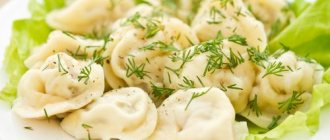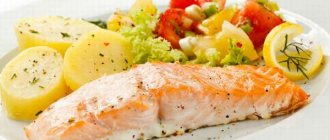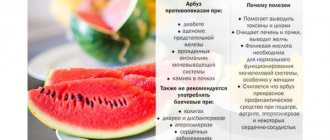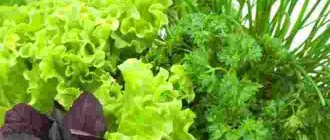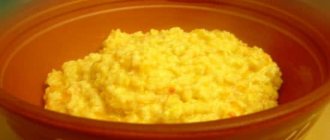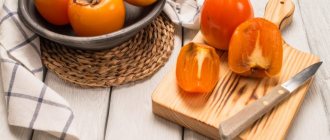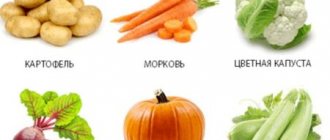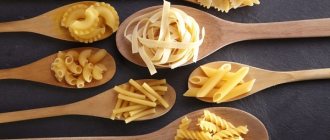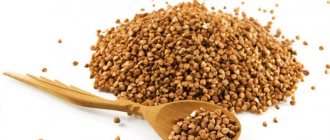With the development of pancreatic disease in the cavity of the parenchymal gland, complex therapy is used, which consists of taking special medications aimed at eliminating this pathology and the causes that provoked it, such as cholecystitis and other diseases of the gallbladder.
Another necessary aspect of treatment is adherence to a special diet, which involves excluding many dishes and foods from the daily diet. Bread for pancreatitis and other baked goods are also included in the list of prohibited products. This is explained by the fact that damage to the pancreas by the inflammatory process contributes to digestive disorders, against which constipation or diarrhea develops, and the breakdown of food begins to occur with the formation of various malfunctions, during which a large concentration of food is simply not digested. But it is worth noting that not all baked goods are prohibited, but only certain varieties of them. In today’s material, we will take a closer look at what exactly is allowed to eat from baked goods and baked goods when pancreatitis develops, and what consumption should be avoided in order to prevent a possible exacerbation of pancreatic disease.
What flour products are allowed to eat with inflammation of the pancreas and cholecystitis?
Ideally, people suffering from pancreatitis or cholecystitis should avoid starchy foods. Or find an alternative:
- diet bread;
- rice cakes;
- Armenian lavash.
But if you really want to diversify your menu with flour products, there are some tips from gastroenterologists:
- Use only stale bread. Even better - crackers. They can be added to soups or tea.
- When choosing bread, carefully study the composition. The product must not contain food additives, emulsifiers, or dyes.
- The best bread is unleavened, or in the production of which a minimal amount of yeast was used.
- Flour products with seeds, nuts, and raisins are excluded.
What kind of bread is better to buy? Less risk is seen in:
- wheat;
- bran;
- whole grain;
- rye.
White bread, especially made from premium flour, is the most provocative for the pancreas due to starch, which activates the secretion of digestive juice. Fresh, delicious baked goods are especially harmful - they can cause exacerbation of pancreatitis or cholecystitis.
All types of sweet buns and pies are strictly prohibited. Their dough is prepared with margarine and butter - products that aggravate pancreatic problems. Fans of flour delicacies are recommended to switch their attention to biscuits and dryers.
Is it allowed to eat bread if you have pancreatitis?
The complexity of a disease such as pancreatitis lies in the fact that the pancreas becomes inflamed. Its mucous membrane begins to collapse from an excess of food, which is difficult to digest due to the lack of sufficient enzymes. Therefore, patients are put on strict diets with the exclusion of most foods. This is especially true for those that are strong irritants for the damaged gastrointestinal tract.
It is recommended to fast for the first 20 days of an exacerbation. Then, gradually, bread begins to be introduced into the menu of a patient suffering from pancreatitis. This product is needed to replenish the body's strength after fasting. Bread has the following characteristics:
- presence of high nutritional properties;
- absence of flavoring additives, flavors and dyes added to other products;
- high rate of digestion even with damage to the gastrointestinal tract due to the absence of complex components in the composition;
- ease of perception by the digestive system.
In order to avoid possible risks, such as exacerbations during remission or complications during treatment, you need to avoid eating any freshly baked bread, pastries, baked goods with nuts, raisins, seeds or prunes. Fresh flour products are prohibited for pancreatic inflammation due to the high concentration of starch and yeast unicellular fungi, which trigger fermentation processes in the gastrointestinal tract and cause unwanted bloating. They need to be replaced with gray bread made from second-grade or peeled flour.
It’s better if it’s “yesterday’s” baked goods.
Black, white, lavash and loaf
White bread or a loaf is introduced into the diet gradually, during the period of remission of pancreatitis or gastritis. For the menu, a product is selected from sifted flour of grade No. 1 or with an admixture of wheat.
First, small pieces are dried in the oven. Thus, the product gets rid of harmful fiber and other factors that irritate the gastrointestinal tract, but retains the carbohydrates the body needs.
As an alternative, sometimes you are allowed to eat yeast-free white pita bread. But do not forget that the flour used for this product may also contain a lot of harmful starch and heavy carbohydrates. Therefore, even pita bread is recommended to be thermally treated (dried in the oven) before eating.
Dried white pita bread, loaf or bread should not be eaten warm. You need to wait until the pieces removed from the oven have completely cooled down.
Types of bread
Not all flour products can be included in the diet for digestive disorders. Eating freshly baked baked goods is strictly prohibited. You can only eat yesterday's or dried baked goods. Any baked goods should be consumed with caution, and only in strictly prescribed quantities.
What kind of bread can you eat for pancreatitis in the acute and chronic phase? During the critical period of pancreatic inflammation, you should not eat fresh baked goods. After fasting, they begin to gradually introduce yesterday's baked goods in moderate quantities.
Rusks for pancreatitis are among the products that are recommended for exacerbations, especially if a symptom such as diarrhea occurs. Any freshly baked baked goods should be excluded even in the remission stage. It provokes increased formation of enzymes that irritate the walls of the diseased organ.
For pancreatitis, white bread made from premium wheat flour will have to be excluded from the menu completely. You can cut it into slices and dry it in the oven. This way it will be more useful.
Armenian lavash is allowed for consumption, but only yesterday’s baked or dried.
Bran bread for pancreatitis is excellent for patients with disorders of the gastrointestinal tract. This species contains iodine and calcium, and the salt content is reduced, but its fresh consumption is not recommended due to the large amount of fat and starch. In dried form, it is an ideal option for patients. Only bran itself is a rather heavy food for the stomach, which provokes increased production of hydrochloric acid, and as a result overloads the pancreas. During meals, you can eat four thin crackers, and it is best to eat them in combination with puree soup.
Rye bread for pancreatitis will be the most preferable option. The main thing is that the bread is without various additives (raisins, prunes, dried apricots, caraway seeds, nuts). Such species should not be used under any circumstances, even in dried form. Black bread for pancreatitis, or rather crackers made from it, are perfect for dietary nutrition. It is important to remember that when eaten fresh it can cause heartburn because it is highly acidic.
The properties of a whole grain product are identical to rye, but it does not increase acidity. The additives it contains require it to be used with caution and only on the eighth day after an exacerbation. You are allowed to eat no more than two hundred grams per day, divided into several doses.
Borodino bread in dried form is very useful for pancreatitis. In its fresh form, its use will be disastrous for the patient. The bread contains yeast that is not compatible with gastric juice, as well as bran, which, as mentioned above, is difficult to digest. During the whole day you can eat only two Borodino crackers.
White bread for pancreatitis
White bread is introduced into the menu of a patient with pancreatitis gradually, during a period of stable remission. The recommended bread is made from sifted flour of the first grade or with an admixture of wheat. Before use, pieces of white loaf should be dried in the oven to get rid of fiber and yeast that can cause fermentation, thus preserving carbohydrates that are beneficial for the body.
It is advisable to exclude white bread made from premium or first-grade flour for pancreatitis.
The lower grade flour used for baking, the better and healthier it is, because such bread contains more minerals.
For these purposes, wallpaper flour or second-grade flour is used.
But even such bread needs to be dried before use.
You can make crackers out of it in the oven, drying the slices at low temperatures for about an hour, or simply dry it by spreading it out in the open. The norm of bread per day is 200 grams.
Armenian lavash
An alternative to white bread is Armenian lavash made from white flour, prepared without the use of yeast. Lavash should also be consumed in limited quantities, since the flour from which the product is made contains harmful starch and heavy carbohydrates. Oven-dried lavash is healthier. The loaf or pita bread is not allowed to be consumed immediately after being removed from the oven while warm. You must wait until the removed bread has cooled completely.
Armenian lavash is a white bread, so you can eat it if you have pancreatitis, but do it with caution, observing your body’s reaction. Ideally, it should be baked a couple of days before eating and dried. You are allowed to eat no more than 200 grams of pita bread per day, divided into several meals. During remission, you can increase the daily intake to 300 grams.
Rye bread for pancreatitis
For inflammation of the pancreas, it is recommended to use rye bread, since this variety activates the digestive tract, contains a small percentage of starch and is easily absorbed by the body. Rye bread is considered dietary, but nutritionists advise using it dried and in limited quantities.
Fresh rye or, as it is also called, Borodino bread, has a sour taste, which is due to the presence of rye acid (hydrolysis class enzymes) in the composition. The component can cause an increase in the acidity of gastric juice, irritation and provoke an exacerbation of pancreatitis, which is why the best option for using this type of bread is crackers.
Black bread for pancreatitis
Black bread is baked from different types of rye flour. Used for cooking are sifted rye flour, wallpaper flour and peeled flour. Also, there are several types of rye bread - simple black bread, custard or Moscow bread. The calorie content of black bread is lower than that of other baked goods. But this variety contains a large amount of useful substances, vitamins and minerals. The high content of vitamin B, which maintains blood sugar levels, makes it beneficial for diabetes.
As is known, with pancreatitis there is a risk of developing diabetes mellitus as a result of enzyme deficiency. That is why many nutritionists recommend the use of black bread for pancreatitis, but in the form of crackers and in small portions.
Whole grain product
Whole grain bread is considered one of the healthy types. Such bread is endowed with the same beneficial qualities and properties as products made from rye flour, but at the same time has a positive effect on the acidity of gastric juice. However, whole grain bread contains a lot of solid particles, unmilled grains, interspersed seeds, sesame and raisins, which is not recommended in the acute phase of inflammation of the pancreas, since it is difficult for the body to digest and can cause severe pain.
The product is allowed to be introduced into the diet of a patient with pancreatitis only on the 8th day after the end of therapeutic fasting. You are allowed to eat bread in small pieces, carefully monitoring the individual reaction of the body. You are allowed to consume no more than 200 g of bread of this type per day, dividing the total portion into several doses.
Bran bread
Bread with bran can only be included in the menu of a patient with pancreatitis during a period of stable remission, since bran is a fairly coarse food additive that is almost not digested by the digestive tract, and causes increased peristalsis of the stomach and intestines. Such stimulation also negatively affects the pancreas, the excessive load of which during the period of dysfunction is strictly contraindicated.
Nutritionists recommend eating bran bread in a dried form, first cutting it into small pieces. In the form of crackers, bread is more easily digestible and supplies the body with useful substances without causing gastrointestinal disruption. It is recommended to use dried bran bread with pureed soups, pureed soups, and herbal teas. You can eat a maximum of 4 crackers per day.
Baranki
Dryers and bagels for pancreatitis are an approved and useful product. Bagels contain a significant amount of B vitamins, as well as vitamins PP, H and microelements necessary for the body of children and adults. Products entering the body become a source of easily digestible proteins and carbohydrates. Unlike other types of bread, they do not cause flatulence, bloating, and are not a burden on the digestive tract.
It is important that the bagels used are not made from butter dough and do not have any additives. The product should be consumed in limited quantities to avoid constipation and weight gain. Bagels and dryings can be added to the diet 3 weeks after an acute attack of pancreatitis; the use of products should be combined with low-fat fermented milk products, soups and rosehip decoction.
Rye
For problems with the pancreas, the most preferred type of bread is rye:
- it stimulates the gastrointestinal tract well;
- contains little starch;
- very easily digestible by the stomach.
Black bread is more often included in dietary nutrition, even more readily than wheat bread.
However, rye bread should also be consumed dried and in limited quantities. Or eat yesterday’s, slightly calloused. Fresh rye or Borodino bread has a sour taste for a reason: it contains rye acid. And this element can cause harm, provoking an attack of pancreatitis.
The best option is crackers made from black rye bread, devoid of any seasonings or additives (raisins, caraway seeds, nuts, etc.).
Kinds
There are a huge number of varieties, as well as cooking methods. For pancreatitis, what bread should be used in the patient’s diet:
- Wheat is baked from premium (or first grade) flour. Restricted use at different stages of the disease. It will be introduced into the patient’s diet only in the form of crackers. Dried bread has a less aggressive effect on the functioning of the pancreas. Avoid additives in the form of nuts, raisins and other ingredients, even in dried form.
- Bran bread is used in small quantities for pancreatitis. The bran content improves the functioning of the digestive system, and also helps strengthen the immune system and absorb toxins. It is very important to dry it, since bran consists of fiber, which affects the performance of the diseased organ, which will lead to an exacerbation of the disease.
- Rye bread contains fewer calories than other types and contains large amounts of amino acids, minerals and vitamins. With regular use, intestinal motility is restored and the body is gradually cleansed of toxins. Is it possible to eat black bread with pancreatitis? Despite the positive and beneficial properties, fresh rye products should not be consumed if you have pancreatitis. Borodino bread is a type of rye bread. It is recommended to be consumed dried in small quantities, as it contains sugar, molasses and coriander.
- Whole grain bread is distinguished by the fact that when kneading the dough, whole grains of wheat are added, as well as unground flour. Therefore, such a product contains a large amount of amino acids, enzymes and carbohydrates. Coarse grinding and the content of small grains in the composition have a bad effect on the functioning of the pancreas.
- Flourless bread made from sprouted grains is one of the healthy ones. Sprouted wheat grains are ground and kneaded into dough without yeast. In case of inflammation of the pancreas, the diet necessary for the body contains such bread. Can be used in dried form.
- Yeast-free bread. Use hop starter or brine instead of yeast. remember that this product has an effect on the gallbladder.
- Bread made from cereal flour - buckwheat, oatmeal, corn. A wonderful option for pancreatitis.
With bran
Bran bread causes a lot of controversy among nutritionists. On the one hand, the product is not recommended for those who suffer from pancreatitis or cholecystitis. On the other hand, bran bread has good sides:
- bake it with a minimum amount of salt;
- Bran contains calcium, iodine and other necessary elements.
The disadvantages of bran for pancreatitis include:
- starch and fat content;
- when fresh, it is difficult for the stomach to digest;
- overload the pancreas with the production of hydrochloric acid.
Conclusion: in order to reduce the risk and not overstimulate peristalsis with roughage (which, of course, is bran), this type of bread is consumed exclusively dried. Thin croutons are made from it and served along with puree soups (4-6 croutons each). And during periods of exacerbation of pancreatitis, they are temporarily abandoned.
Whole grain variety
If you have inflammation of the pancreas, it is better to eat whole grain bread. Whole grain baking is preferable for pancreatic inflammation of the pancreas. It is endowed with the same beneficial properties as rye, but does not affect the acidity of gastric juice. However, it contains a lot of solid particles, unground grains, inclusions of seeds, sesame, and raisins. In the acute course of the disease, this can cause severe pain.
Despite this composition, the product can be administered with great caution on the 8th day after the end of the fasting diet. You should eat bread in small portions, carefully listening to the body’s reaction. The daily dose of whole grain baked goods should not exceed 200 g, divided into several doses.
Wholegrain
Whole grain bread can have a beneficial effect on the gastrointestinal tract:
- remove bile, toxins, cholesterol and radionuclides well;
- normalize the biochemical composition of pancreatic juice;
- restore intestinal microflora.
Whole grain bread is one of the first types of bakery products that begin to be added to the patient’s diet. Scheme for adding a product to the menu:
- After 1–2 weeks of fasting after an attack of pancreatitis, you are allowed to try crackers made from whole grain bread.
- The first days the daily norm does not exceed 100 grams.
- After a few more days, the volume of whole grain crackers increases to 200 grams.
And during the period of remission, the pancreas responds normally to small slices of regular whole grain bread. But not fresh baked goods, but yesterday’s cooking.
Acute phase
Is it possible to eat bread during the acute period of pancreatitis? The answer is categorical - it is impossible. Especially in the first week, when fasting and drinking plenty of fluids are prescribed. Bakery products in the form of crackers are introduced into the patient’s diet exclusively after fasting during the recovery stage. It is worth agreeing on the types and quantities with your general practitioner.
bread types
In case of pancreatic syndrome, after a week of taking medications and diet, the following products are allowed to be added to the menu:
- dried bread made from wheat flour;
- Armenian lavash;
- yeast-free.
Other types are contraindicated in the phase of exacerbation of pancreatitis. The consumption of baked goods is limited for the duration of the diet for up to 12 months.
Remission period
What kind of bread can you eat if you have pancreatitis after the unpleasant symptoms have subsided? During the remission stage, a fairly wide variety of varieties of baked goods, bread, crackers and bagels are allowed to be consumed. The following are added to the list of permitted bakery products:
- whole grain (plus crackers made from it);
- white yesterday or dried;
- biscuit and white bread croutons;
- diet bread;
- bran with great forethought (as well as crackers);
- the bagels are slightly dried;
- drying;
- biscuits.
Remember that you should eat coarse and hard bread with caution. Baking with the addition of raisins, nuts, spices and other large particles, even in remission, will lead to increased production of pancreatic enzymes. Increased secretion negatively affects pancreatic tissue, gradually leading to self-destruction. Solid additives in the product increase intestinal motility, which will lead to flatulence, bloating, gas formation and pain.
crackers for pancreatitis
Fresh and rich baked goods during the remission stage also remain prohibited.
Bread
- Bread is used for pancreatitis as a substitute for conventional flour products. They are sold in special departments of stores intended for dietary products. The technology for preparing yeast-free bread is adjusted to meet dietary requirements:
- no flavorings or fragrances are used;
- flour from various grains is soaked in barely salted water;
- The dough is rolled out into the thinnest sheets and dried in special ovens.
Adding buckwheat or rice flour to the product diversifies the taste of the bread.
You can eat bread with all dishes:
- with soups;
- as a side dish for fish or meat;
- crumble into salads.
The breads make delicious desserts if you coat them with honey.
Bread at the acute stage of pancreatitis
Patients are not allowed to eat white or black wheat products made from premium and first grade flour, rye, whole grain, bran baked goods. These products:
- provoke excessive release of proteolytic enzymes, which destroy the tissue and mucous membrane of the inflamed organ;
- cause rapid contractions of the intestines, which increases diarrhea and develops pain;
- activate gas formation, exacerbating bloating.
However, after fasting, patients need nourishment, so gradually they begin to introduce bread, “yesterday’s” baked goods, and dried crackers into the menu, which do not cause increased pancreatic secretion. At the stage of sustainable improvement, “yesterday’s” white second-rate product is allowed. Upon completion of the rehabilitation period, it is allowed to eat rye bread in quantities not exceeding 100 g per day.
Rusks and bagels in the diet for inflammation of the pancreas and gastritis
Nutritionists are most willing to allow crackers on the menu for pancreatitis. Of all types of baked goods, this is a good alternative to fresh bread without harm to damaged gastrointestinal organs. Even after acute poisoning, as with gastritis, it is allowed to drink black tea with crackers, especially black bread.
It is better to eat homemade crackers. Store-bought products may contain additives that are unnecessary for the pancreas. Black or wheat bread, preferably without yeast, is well suited for this. Thin briquettes or strips are dried for 5–10 minutes in a preheated oven and used when cooled. They can be added to soups, salads, and tea.
As for bagels, doctors recommend eating them only during periods of stable remission and buying them only in nutrition departments. Unfortunately, regular bagels are prepared with impurities, excess vanilla and other additives to create an attractive taste.
Recipes
To avoid unwanted additives that are stuffed into store-bought bread, you can bake the product yourself. For homemade bread, useful for people with pancreatitis, there are two good recipes.
For example:
- For 300 grams of coarse flour (necessarily sifted) there is 0.5 tsp. salt, 5–7 g yeast and 1 tbsp. boiled water.
- Yeast is diluted with warm water in a convenient, clean bowl. Add salt. Add flour, stirring the mixture in a circle with a spoon.
- Cover the top of the bowl with cling film. The dishes are left in a warm place for a couple of hours, waiting for the dough to rise and increase 3 times.
- The finished dough is rolled out on a floured surface. Fold in an envelope. Place on a baking sheet lined with parchment (do not grease with oil).
- Cook in the oven for about 40 minutes at 180 degrees.
Another simple recipe:
- One tablespoon of sugar and 10 g of yeast are dissolved in a glass of water (boiled, lukewarm).
- After 10 minutes, add 1 tsp. salt and 1.5 tbsp. l. oil (olive, flaxseed or sesame). Stir.
- While kneading with a spoon, gradually add 2 cups of rye flour (or regular flour, grade No. 2).
- The dough is kneaded until it stops sticking to your hands. Then leave it alone in a bowl covered with a clean towel.
- After a while, the dough will rise well, twice as much. It needs to be kneaded again and left in a warm place again. So, twice.
- The finished dough is placed in the chosen form and placed in an oven preheated to 190 degrees.
- In 40 minutes the homemade bread will be ready.
Warning: you can only eat homemade bread the next day.
Bread can be baked at home. Then it will not contain additives that are harmful to health and interfere with weight loss. The main thing is to choose a low-calorie recipe.
Recipe 1. Borodinsky
Pour 15 g of live yeast into 100 ml of hot water. Add 30 g sugar. Shake. Leave for 10 minutes. Add 500 g of rye flour and 200 g of wheat flour. Add 50 g of malt. Pour 250 ml of warm water. Knead the dough for 15 minutes. Add 30 g of cumin and coriander. Add salt to taste. Knead again.
Recipe 2. Bran
Grind 20 g of yeast with sugar and salt (to taste). Pour in a small amount of warm water. Stir until the yeast is completely dissolved. Add 200 g of rye flour and wheat bran. Pour 400 ml of warm water. Knead. Cover with a towel and leave warm for 3 hours. Stir. Add 30 ml of olive oil and another 400 g of rye flour. Knead the dough and leave for half an hour. Form and bake for 20 minutes at 180°C.
Flour products are easy to prepare at home.
Ingredients:
- second grade flour or rye - 2.5 cups;
- dry yeast - 11 g;
- salt - 1.5 tsp;
- sugar - 1 tbsp;
- warm boiled water - 250 ml;
- vegetable oil - 250 ml.
Pour water into a bowl, dissolve yeast and sugar in it. Let it brew. Then add salt, mix, add flour in small portions, adding vegetable oil from time to time. Then knead the dough until it comes away from your hands. After this, the dough should be removed to infuse in a warm place. After standing, repeat the kneading procedure again.
Now put the dough into a mold and place it in the oven. Bake at 200°C.
Alternative
Another common alternative is bread. This yeast-free dough made from various grains is baked into thin sheets.
At home, it is easy to prepare an alternative to bread - dietary flatbreads made from rice or buckwheat flour. They are very easy to prepare at home: mix one glass of rice or buckwheat flour with ½ glass of boiled water and 1 tbsp. l. olive oil. You can add a pinch of salt. It is convenient to bake even in a frying pan (lightly greased with olive oil), like pancakes.
Good to know: buckwheat cakes are good for diabetics, and rice cakes are good for those who suffer from frequent diarrhea.
Warning: to prepare homemade breads and flatbreads for inflammation of the pancreas and cholecystitis, do not use flour from barley porridge, oatmeal, corn, peas or beans.
You can also replace bread with sesame seeds. A small amount of grains is sprinkled onto soups and vegetable salads.
Bread alternative
Rusks become a favorable option for a patient suffering from pancreatitis. You need to be careful when choosing the type of bread. Rye crackers, for example, will cause a negative reaction in the pancreas. The amount of starch in breadcrumbs decreases along with the evaporation of water during drying; by consuming pieces of this bread, enzymes will not be formed, and digestion will be easy. The safest for the disease are crackers made from gray bread. If desired, you can make crackers from biscuit.
If crackers are made at home, careful attention is paid to choosing the right bread. The product should not contain chemical additives, spices, herbs, even natural ones. Vegetable fats are also not good for the body, eliminate them. After selecting the permitted product, the bread is cut into thin slices. Dry thoroughly so as not to injure the stomach or provoke inflammation of the gland. Crackers should be eaten in small quantities with kefir, herbal tea or liquid dishes.
Ready-made crackers from the store will need to be carefully checked. The product must be free of spices, preservatives, dyes, stabilizers and flavor enhancers. The listed additives will negatively affect human health. Attention must be paid to the integrity of the product packaging. If the package is damaged, patients are not allowed to eat the product.
The main advantage of crackers is considered to be easy digestion, without overloading the body with excess calories and causing a negative reaction in the pancreas. After fasting, small portions of crackers will be beneficial because they contain vitamins, fiber and microelements.
Bread
For those suffering from inflammation of the pancreas, bread can be used to replace bread. Most often sold in the diet food department. Special breads for the sick are offered for sale. Crispbread for pancreatitis will not cause irritation, keeping the pancreas calm, and does not contain flavorings, flavor enhancers, or dyes.
In case of exacerbation of the disease, dietary crackers are perfect as a replacement for other bakery products. Typically, breads contain flour from various grains, hence many beneficial properties. For patients with advanced diabetes mellitus, buckwheat flour breads are suitable. And for those suffering from diarrhea, rice flour breads are an ideal option. The products replace the daily dose of bread without losing the benefits for the body and taste.
Lavash for pancreatitis. Diet features
One of the effective treatment methods is the use of specialized dietary nutrition. By following a diet, you can control the course of the disease, slow down its development and prevent complications, as well as reduce the need to take medications.
For pancreatitis, you need a balanced diet, rich in various minerals and vitamins, and low in fat.
It is necessary to eat food in small portions, and at regular intervals.
In acute pancreatitis, an absolute diet is necessary. The danger lies in the high risk of complications from food exposure. There are also serious cases in which a special probe is inserted into the duodenum.
In some cases, therapeutic fasting is indicated.
Healthy bread
The main diet for the first couple of days with acute pancreatitis is fasting. Then, gradually, acceptable foods begin to be introduced into the diet, including daily (yesterday’s) bread. All permitted types can be eaten no more than 200 grams per day in small portions throughout the day.
The most gentle include:
- All types of bread with the addition of rye flour (gray).
- Armenian lavash.
- Yeast-free bread (made with hop leaven can have a choleretic effect).
- Bread made from refined wheat varieties.
- Prepared with your own hands.
During the remission stage, you can allow additional consumption of some healthy varieties of bread. But before you decide which bread to introduce into your diet first, you need to take into account that some have a rough structure, a high content of enzymes and can irritate the walls of the stomach and actively affect the digestion process. You can eat such bread in the remission stage no more than 100 grams per day in several doses.
When buying bread, you need to make sure that it does not contain sunflower seeds, nuts, raisins and sesame, whose solid particles can have an additional irritating effect. At this stage you can use:
- Whole wheat bread.
- Bread with bran.
- Rye (black) bread, including Borodino bread
- White bread with low gluten content.
- Diet bread (only extruded, wheat with the addition of cereals, for example “Hercules”)
Period of acute pancreatitis
When inflammation of the pancreas worsens, patients are prescribed therapeutic fasting, which can last from 2 to 4 days. They must then adhere to a strict diet, gradually introducing new foods into the menu.
Bread enters the diet only 3 weeks after an acute attack, when stable remission is observed. At first, it is recommended to eat it in small pieces, giving preference to the stale product or crackers. The daily norm of bread is 100-150 g, wheat or rye crackers - no more than 50 g. It is better to completely avoid fresh bread, muffins and pastries made from puff pastry.
More than 15,000 years - this is the age of bread determined by scientists. It is surprising that over such an impressive period this product has not become boring and has not sunk into oblivion. On the contrary, every year the number of varieties and types of bakery products increases.
Most people consider bread an essential product that accompanies every meal. However, for certain health problems, including pancreatitis, you should be more careful when choosing suitable products. Limit their volumes, taking into account the recommendations of specialists.
We wish all readers of our blog good health and success in business!
If you find an error, please select a piece of text and press Ctrl+Enter.
+2
